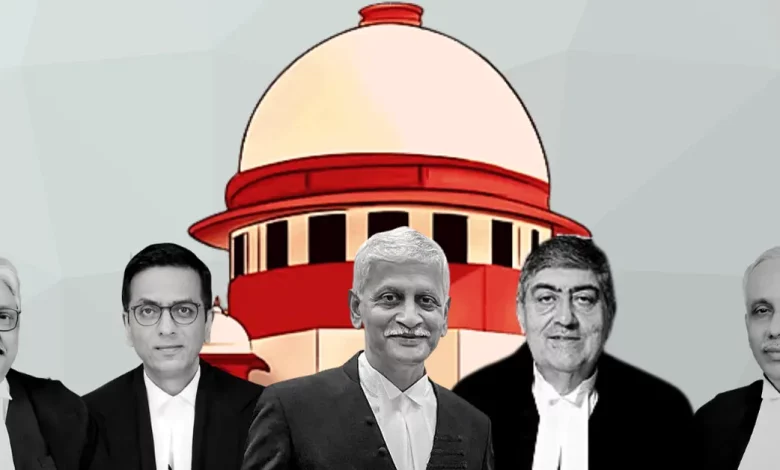
Context- The Supreme Court quashed an Andhra Pradesh High Court order which voiced strong disapproval over the apex court Collegium transferring two Chief Justices.
About Supreme Court Collegium
- It is a gadget under which appointments and transfers of judges are determined through a forum of the Chief Justice of India and the four senior-maximum judges of the Supreme Court (SC).
- It is not referred to in the Indian Constitution.
What does the Constitution clearly prescribe?
- Article 124 deals with the appointment of SC judges.
- It says the appointment must be made by the President after consultation with the judges of the High Courts and the Supreme Court as the President may additionally deem essential. The CJI is to be consulted in all appointments, except his or her own.
- Article 217 deals with the appointment of High Court judges.
- It says a judge should be appointed via the President after consultation with the CJI and the Governor of the state. The Chief Justice of the High Court concerned too ought to be consulted.
Evolution of the Collegium System
-
- Since the Constitution mandates session with the CJI is important for appointments to the judiciary, the collegium version evolved.
- It has its genesis in a series of 3 judgments that are now clubbed together as the Three Judges Cases.
- First Judges Case (1982)
-
-
- The SC held that “session” of judges does not mean concurrence.
- Hence, it gave primacy in the appointment of judges to the Executive.
-
- Second Judges Case (1993)
-
-
- The court reversed its earlier ruling by converting the meaning of “consultation” to concurrence.
- With this, the advice tendered with the aid of CJI became binding. However, the CJI ought to remember the perspectives of two of his senior most colleagues.
-
- Third Judges Case (1998)
-
- The court gave primacy to the opinion of the CJI inside the count of the appointment of Judges.
- However, the CJI ought to consult four senior-maximum judges of SC.
- Opinions of all participants of the collegium should be in writing.
- In case of a distinction of opinion, the majority view will be successful.
- Even if two judges within the collegium give an adverse opinion of someone for appointment because the SC judge, the CJI ought to now not ship the recommendation to the government.
- These 3 instances indicated that the collegium headed by using the Chief Justice of India would have primacy in the appointment of judges to the better judiciary.
- This collegium makes guidelines to the government for the appointment of judges to the SC and of Chief Justices of High Courts, and the transfers of HC judges.
Executive function
- Judges of the better judiciary are accordingly appointed best through the collegium gadget, and the government has a role only after names were judged by the collegiums.
- The government’s function is constrained to getting an inquiry conducted through the Intelligence Bureau (IB) if a lawyer is to be expanded as a choice in a High Court or the Supreme Court.
- The government also can raise objections and are seeking clarifications concerning the collegium’s choices, but if the collegium reiterates the identical names, the government is sure to appoint them.
Source: Indian Express





.png)



